Estimated reading time: 12 minutes
Are you ready to read about Captain Bruce Carr?
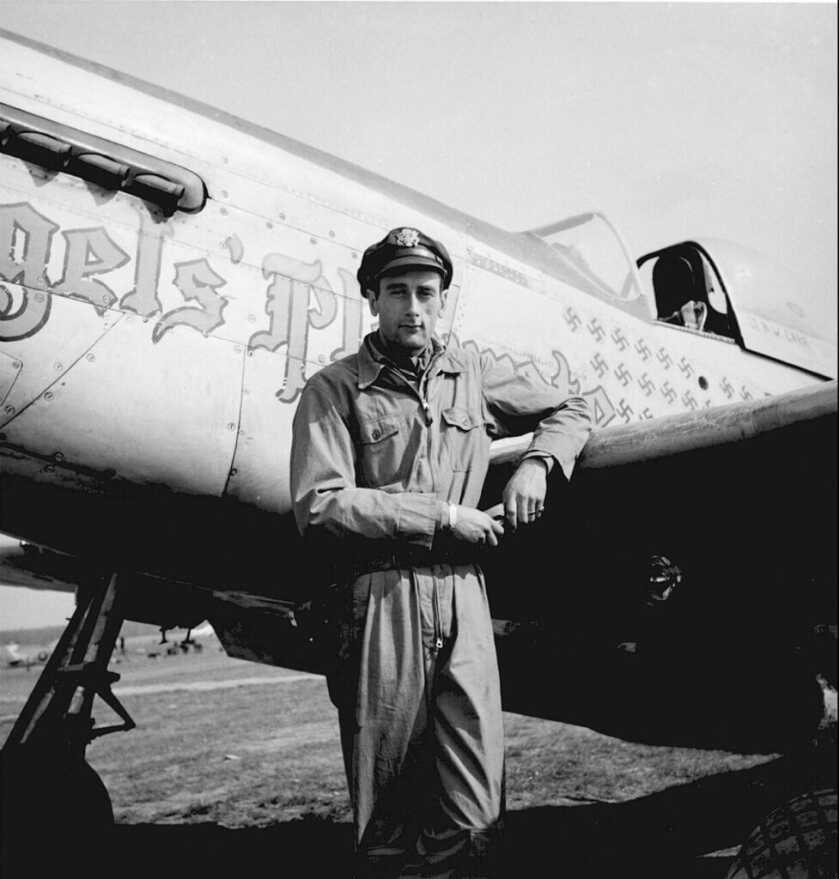
The Army made me a pilot. I never could have afforded it otherwise. Along the way, I have flown maybe a dozen different aircraft types. Lots of other folks have flown more.
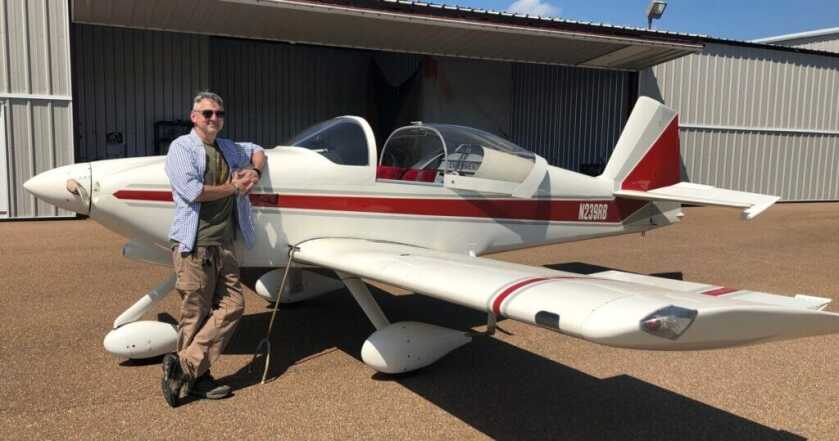
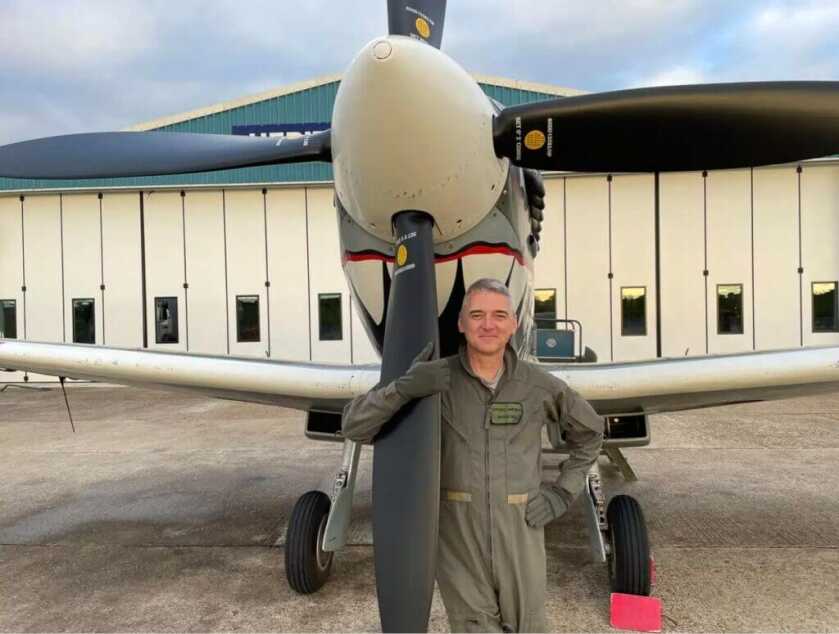
Five of those were helicopters, while the rest were airplanes. They run the gamut from Cobra gunships to a 1943 Grumman Goose patrol plane to a vintage Supermarine Spitfire. While helicopters and airplanes require very different skillsets, within their respective genres all airplanes and all helicopters fly about the same.
Table of contents
- Graduate-Level Stick Wiggling
- Setting Up for Bruce Carr
- CPT Bruce Carr – Fighter Pilot
- Into the Hornet’s Nest
- This is Just Nuts…
- A Fortuitous Bit of Engineering
- Little Things Become Big Things for CPT Carr
- Out of the Frying Pan, Into the Fire…
- The Grand Entrance
- The Rest of the Story
- The End of the Road for Captain Carr
Graduate-Level Stick Wiggling

There’s a difference between flying a warplane and fighting it. Making an aircraft go from point A to point B is pretty straightforward. Flying a multi-ship air assault nap of the earth under night vision goggles demands some proper skills. In the military, you go to school for a long time to master a particular aircraft type. In my day, flying Blackhawks, Chinooks, Cobras, and Apaches all required time at Rucker in the schoolhouse.
Truth be known, however, if all you want to do is go someplace, then the big challenge is just getting the machine started. Even today, some 27 years after I left the Army, I could likely crawl into a Chinook that was already turning and fly it someplace. Back in October of 1944, a brass-balled American fighter pilot named Bruce Carr put that theory to the test.
Setting Up for Bruce Carr
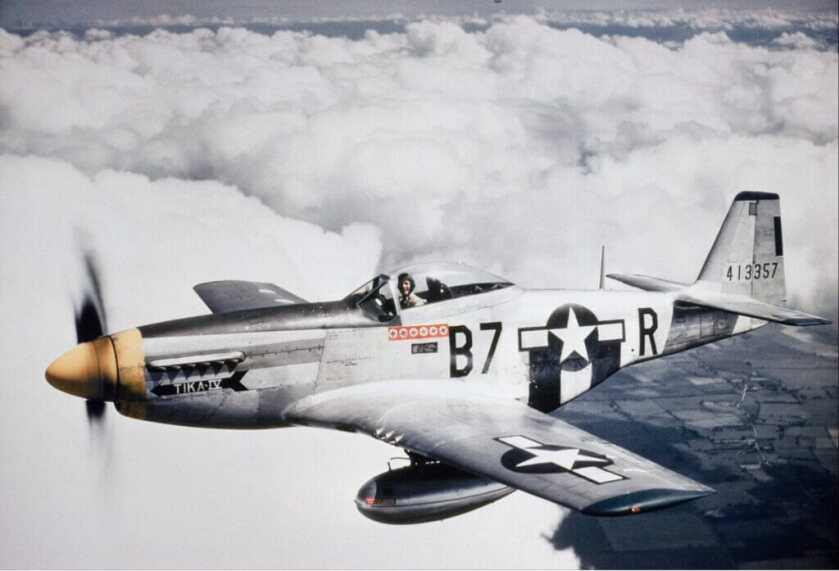
It had been four months since Allied forces stormed ashore in Normandy, and it would be yet another two before the Germans launched the massive counterattack that we came to refer to as the Battle of the Bulge. American and Commonwealth forces had the Wehrmacht on the back foot, while the Soviets were making breathtaking gains in the east. In quiet moments, the more optimistic among the Allies imagined having the war over and done by Christmas.

CPT Bruce Carr – Fighter Pilot
CPT Bruce Carr was piloting a P51D Mustang as part of the 354th Fighter Group on a strafing mission over occupied Czechoslovakia. The Mustang was a hot ship, arguably the premier single-engine fighter in the Allied stable. Sporting a 1,490-horsepower Packard V-1650-7 12-cylinder Merlin engine and half a dozen AN/M2 Browning .50-caliber machineguns, the P51 was both fast and long-legged. It was the first Allied fighter that could reliably accompany American bomber formations on daylight missions over Germany. Hermann Goering, the Field Marshal in command of the German Luftwaffe, confided that once he saw Mustangs over Berlin, he knew the war was lost.
The Achilles heel of the Mustang, however, was that magnificent Merlin engine. Originally developed for use in the British Spitfire, the Merlin was powerful, reliable, durable, and sleek. It was, however, also liquid-cooled. That meant a single round in the cooling system invariably put the engine out of action. As CPT Carr torqued his Mustang around at low level, a burst of German antiaircraft fire caught him squarely amidships. Pulling the stick back to trade airspeed for altitude, Carr jettisoned his canopy, released his seat harness, and jumped out of his stricken airplane.
Into the Hornet’s Nest
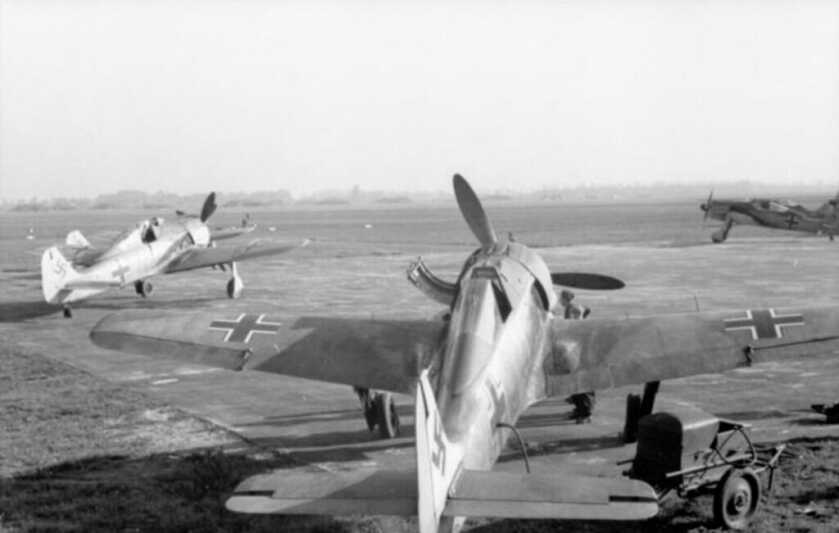
As luck would have it, Carr got clobbered near a Luftwaffe airfield. On the surface, that seemed suboptimal. However, Carr was quietly relieved. He knew he was about to be made a POW. It would be better to do that at the hands of the Luftwaffe than the SS.
By now, it was getting dark. These wartime military airfields were ad hoc affairs erected in handy big open flat spaces. There were no fences. Carr made his way to the treeline surrounding the field and paused to take stock. From his vantage, he could see a pair of Luftwaffe ground crewmen top off a Focke Wulf Fw190-A8 with fuel, crank the engine, and then shut it down again. These two men then moved down the line to the next fighter plane. This procedure was designed to ready the warplanes for a quick scramble. That’s when CPT Carr had a truly mad idea.
Available on GunsAmerica Now
This is Just Nuts…
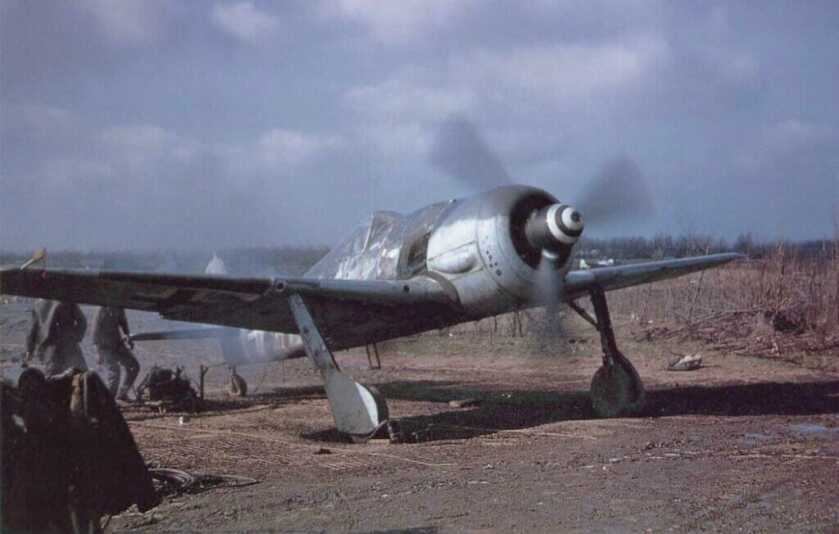
In all of the chaos, the German troops in the area must not have seen Carr bail out of his stricken fighter plane. It seemed nobody was actively looking for him. He hunkered down back in the woods as it got properly dark and began to scheme. With dawn finally approaching, Carr quietly made his way out to the nearest Focke Wulf. He got the canopy opened and climbed into the cockpit without anyone being the wiser.
Fastening the shoulder harness was pretty straightforward. However, it was pitch dark, and Carr had obviously never sat in the cockpit of a German fighter plane before. His plan involved flipping switches and moving controls until something happened. That turned out to be a pretty good plan.
A Fortuitous Bit of Engineering
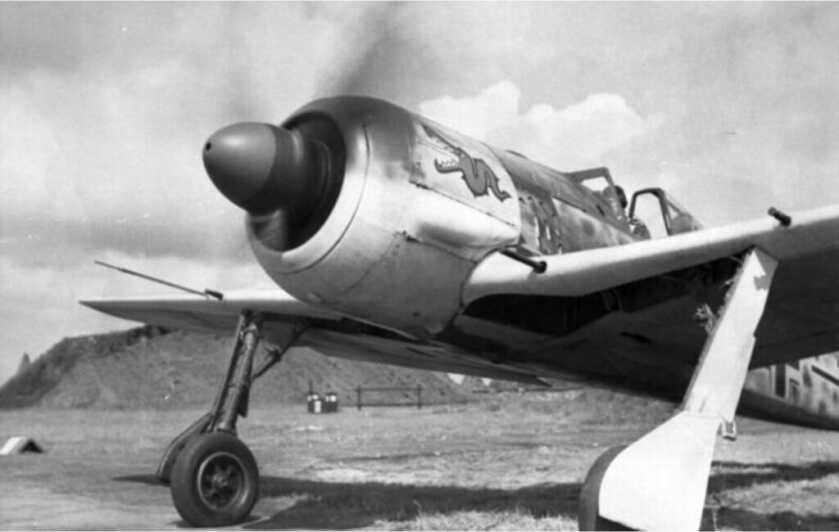
The Fw190 was arguably the most effective German piston-driven fighter of the war. Featuring an air-cooled BMW 801D-2 14-cylinder radial engine slaved to a three-bladed constant-speed propeller, the Focke Wulf was both fast and rugged. It was also designed to be quick into action. Central to this concept was something called the Kommandogerat.
The Kommandogerat was the most advanced throttle system on any single-engine warplane of the war. This centralized control incorporated mixture settings, boost pressure, fuel flow, and prop pitch all into a single lever. The Kommandogerat also made the Fw190 the only fighter plane of the war that could be stolen by a novice and made airborne in a timely fashion.
Little Things Become Big Things for CPT Carr

Eventually, CPT Carr got the big BMW radial turning over. However, nobody was supposed to be out flying this morning. Once the Focke-Wulf’s engine began belching smoke, inquisitive Luftwaffe ground crewmen came out to investigate. Carr knew he had only moments to act.
The fortunate Allied pilot wasted no effort on grace. Instead of trying to taxi out somewhere, Carr simply pointed his stolen fighter plane toward an open space between two hangars and firewalled it. As he bounced across the uneven grassy field he finally got the tail up. Once it felt like he had achieved flying speed, Carr eased back on the stick and broke ground. He was immensely relieved when he figured out how to get the landing gear up.
Out of the Frying Pan, Into the Fire…

By now, the sun was coming up, and western Europe was coming alive. At this stage in the war, the Allies enjoyed near-complete air superiority. It was 200 miles from where he was to his home aerodrome in western France. To get there, he would have to run the gauntlet of both Allied fighters as well as about a zillion trigger-happy GIs. He later claimed that every .50-caliber machinegun between that Czech field and his improvised base in France shot at him on the way home.
CPT Carr kept his stolen mount as low as possible across the French countryside. He knew from personal experience that his air base was ringed with deadly 40mm cannons and motorized .50-caliber quad mount antiaircraft systems. If he lingered overhead at all, they would blow him out of the sky. Navigating solely from memory, Carr skimmed the trees and approached the airfield for a quick straight-in approach.
Just when he thought he might pull this off, CPT Carr found that he could not get the Fw190’s landing gear to come down. Everything was in German, and Carr only read English. Rather than fart around and risk being killed by his antiaircraft guns, the audacious airplane pirate just lined up on the centerline of the active runway and brought the nimble German airplane in on its belly.
The Grand Entrance

Nobody had expected a German Focke-Wulf to belly land on their airfield. Everybody with a gun ran up to the smoking plane, weapons out and ready for trouble. CPT Carr responded with a little choice profanity that shut everybody down. That was when the reality of the situation set in for all involved.
It’s not just every American fighter pilot who would have the audacity to steal a German warplane and fly it back to his home airfield. Bruce Carr was clearly a lunatic of the highest order. He ended the war with 172 combat missions, fourteen aerial victories, a Silver Star, and a Distinguished Flying Cross.
The Rest of the Story
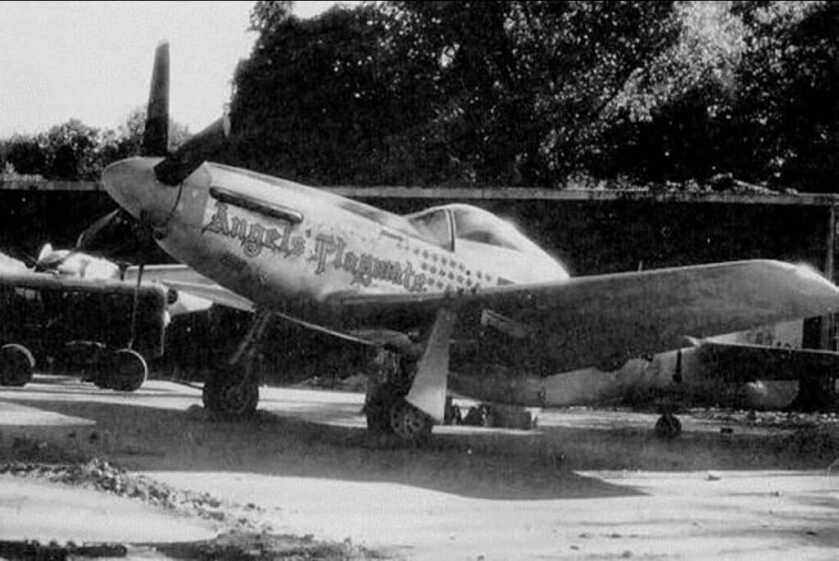
Carr earned his DSC for leading a flight of seven Mustangs into a massive formation of sixty enemy aircraft. In the roiling air battle that resulted, the Mustang pilots shot down fifteen hostile fighters. Carr himself accounted for five in that one engagement–two Fw190s and three Bf109s.
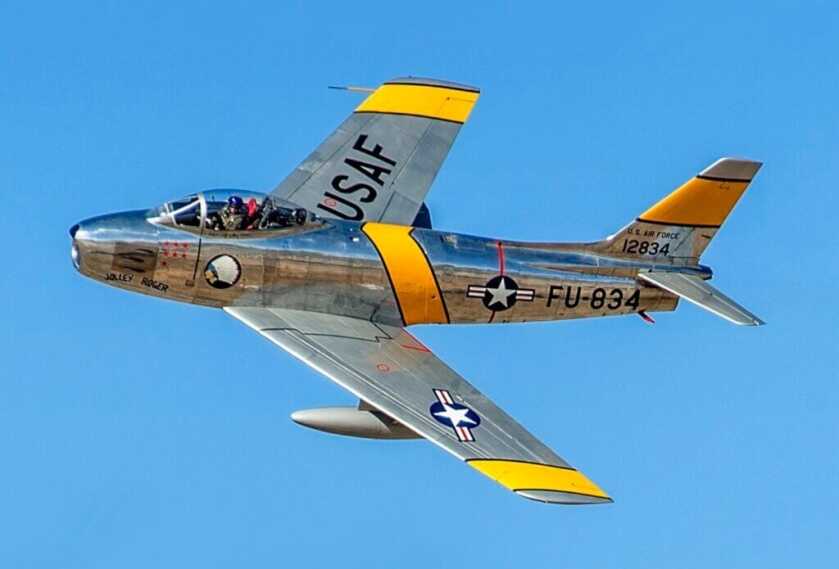
The End of the Road for Captain Carr
After the war, Carr transitioned into F80 Shooting Stars and flew with the Acrojets, the predecessors of the Thunderbirds aerial demonstration team. Major Carr later flew F86 Sabres in combat in Korea. He rotated home having flown 57 combat missions with the 336th Fighter-Interceptor Squadron operating out of Kimpo, South Korea. He served as commanding officer of this unit from early 1955 through the summer of 1956.
Carr made full Colonel in 1968 and deployed to Vietnam flying F100 Super Sabres. He logged 286 combat missions in SE Asia and earned the Legion of Merit as well as three Distinguished Flying Crosses. Carr came home from Vietnam in November of 1969 with a total of 31 Air Medals.
READ MORE: FLT LT Ken Gatward: The Lunatic Limey Beaufighter Driver
Bruce Carr left active duty in 1973 and moved to Florida. He died of prostate cancer in April of 1998 at the age of 74 and is buried at Arlington National Cemetery. Bruce Carr’s exploits would make a fantastic movie, but I fear nobody would believe it was real.
*** Buy and Sell on GunsAmerica! ***










DR DABBS
The Greatest Escape (that never happened) — the popular story of how Lt. Carr stole an Fw 190 to fly back to his unit seems too good to be true, and that’s because it isn’t.
https://theaviationgeekclub.com/
It’s a great story. Too bad none of it actually happened, despite all those articles and the famous video.
The truth is, Carr did take an Fw 190, but that was after the Second World War had ended in Europe and it wasn’t exactly his finest hour. At the time, the 354th Fighter Group was assigned to occupation duty. They were based at Ansbach, Germany, and everyone was bored. Young guys being young guys, they started “borrowing” things from former German military bases. And why not? The Wehrmacht and the Luftwaffe were no more.
The commanding officer of a sister squadron in the 354th Fighter Group, the 353rd Fighter Squadron, Maj. Jim Dalglish, had his own Focke Wulf Fw 190A fighter plane. When Lt. Carr saw that, he decided to get one for himself too. He hitchhiked to a former Luftwaffe airbase near Linz, Austria, found a flyable Fw 190 parked there, and took it. For safety, he even arranged a flight of his own fellow pilots in their P-51s to escort him back to their base. It went perfectly too until he arrived back at Ansbach. Once overhead, he couldn’t figure out how to put the wheels down. He flew around and around trying to make the system work, but it failed everytime. What he didn’t know was that there was a second lever to move too – one that redirected hydraulic pressure to either pull the wheels up, or push them down. Ultimately, he had to belly it in. Thus, the famous film that shows him walking around the plane is really just him happy that he survived a crash landing. It wasn’t long after that that the USAAF issued orders that no German warplanes were to be taken by American pilots. Not only was it dangerous, a special unit was already scouring the countryside looking for undamaged German planes to collect for testing.
Too bad the most important parts of the story are a fairy tale. This pilot really needs no exaggeration of his record. The good doctor needs to fact check his writings. It was fun to read, though.
I always look forward to reading anything Will writes.
Never happened, according to this link: https://theaviationgeekclub.com/the-greatest-escape-that-never-happened-the-popular-story-of-how-lt-carr-stole-an-fw-190-to-fly-back-to-his-unit-seems-too-good-to-be-true-and-thats-because-it-isnt/
another great story!! thanks Doc……..i’ll keep reading. this is the stuff not published in the leftie’s main stream media…….kind of like Paul Harvey’s ‘the rest of the story’………always worth reading
Enjoy Dr Dabbs stories very much.
Maybe he will see this request. Please do one on Terrible Terry Allen. One of the greatest US generals of all time.
Dr. Dabbs writes the best short flight articles. Worth seeking out his writing. This story’s no exception. Thank you Dr. Dabbs for another entertaining story over morning coffee. Captain Carr’s a great American Hero. Another member of the anonymous legions of young American men and women who put on a uniform to give liberty and freedom to countless millions in Eastern and Western Europe during WWII, Korea, Viet Nam, and countless other theaters. God Bless his memory.
Wow…..
Just – WOW!!!
Great coffee read, that.
Thanks for the research and the comprehensive follow-up.
Nice job, once again!
Thanks for another great story, highlighting the bravery and ingenuity of yesteryear’s great Americans. Indeed, there would be little need for exaggeration in a biopic of Col. Carr.
Doc – another great story. We’ve all read about the big guns of fighter aviation from WWII, Don Gentile, Bob Johnson, Dick Bong, Tommy McGuire, Gabby Gabreski and many others, but reading these stories of other aviators whose exploits didn’t result in the same numbers of aerial victories but were nonetheless extraordinary is really awesome. Keep them coming as they are incredibly interesting and some of them, like that of Captain Carr, were quite special. Serving with men like that must have been an incredible experience.
Dr. Dabbs I love your stories like this! Indeed, Col. Carr’s life would have made a great movie. His service to his country needs recognition. Just amazing the courage and dedication this man showed. The number of missions he flew just blows my mind! Thank you for bringing these to all of us!
Dr. Dabbs;
Where do you find these stories? They are great.
Dr. Dabbs, thanks. Always a great read from you!